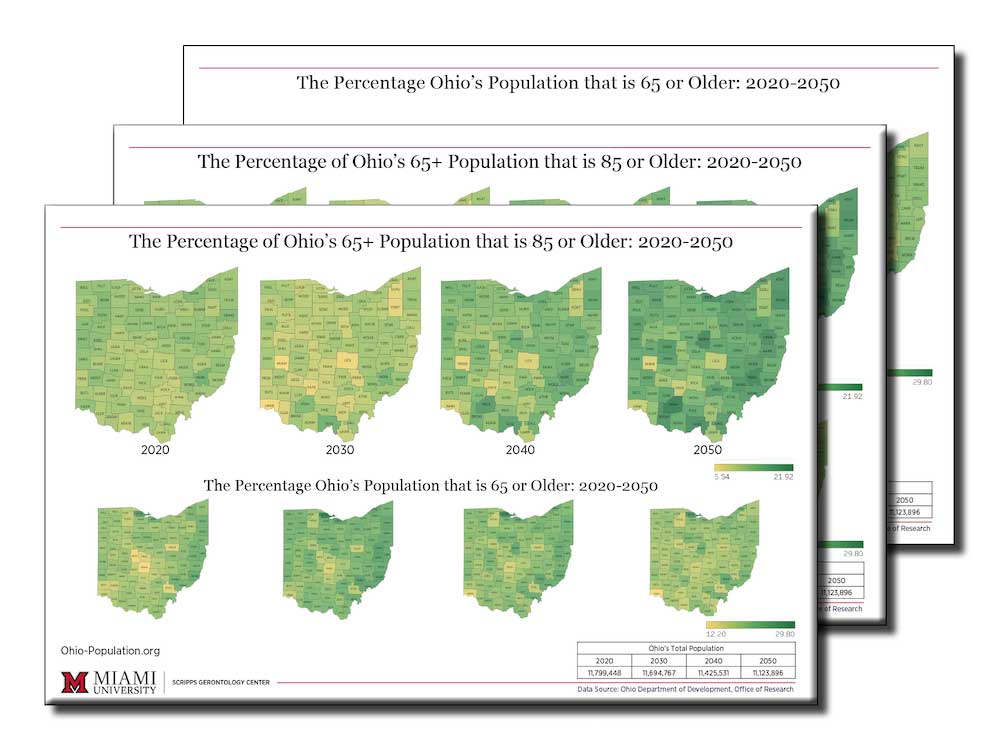High Need* for Long-Term Services
| Age Group |
2020 % |
2020 # |
2030 # |
2040 # |
2050 # |
| 65-69 |
7.3 |
49,933 |
50,235 |
41,225 |
42,012 |
| 70-74 |
8.1 |
44,158 |
51,033 |
41,344 |
37,138 |
| 75-79 |
10.1 |
35,473 |
47,081 |
47,025 |
38,178 |
| 80-84 |
14.7 |
34,372 |
40,791 |
46,770 |
37,991 |
| 85+ |
43.9 |
102,290 |
94,657 |
114,885 |
126,379 |
| Total 65+ High Need |
13.0 |
266,226 |
283,797 |
291,249 |
281,698 |
* High Need is defined as having 2 impairments with Activities of Daily Living (ADL) tasks (mobility, eating, bathing, dressing, grooming, toileting) that require hands on assistance or a doctor's diagnosis of Alzheimer’s Disease or Related Dementia or 1 impairment with ADL tasks and medication management assistance.
Moderate Need** for Long-Term Services
| Age Group |
Moderate Need |
2020 # |
2030 # |
2040 # |
2050 # |
| 65-69 |
9.7 |
66,731 |
67,037 |
54,792 |
55,771 |
| 70-74 |
8.5 |
46,356 |
53,517 |
43,078 |
38,561 |
| 75-79 |
9.7 |
34,109 |
45,315 |
45,303 |
36,868 |
| 80-84 |
8.2 |
19,166 |
22,692 |
26,004 |
21,080 |
| 85+ |
10.8 |
25,160 |
23,404 |
28,265 |
31,015 |
| Total 65+ Moderate Need |
9.4 |
191,522 |
211,965 |
197,442 |
183,295 |
** Moderate Need is defined as having 1 impairment with an Activity of Daily Living (ADL) task (mobility, eating, bathing, dressing, grooming, toileting) that requires hands on assistance or 2 or more impairments in Instrumental Activity of Daily Living (IADL) tasks (Shopping, meal preparation, light housework) that require hands on assistance.
Total of all Disability for Long-Term Services
|
| Need for Long-Term Services |
% |
2020 |
2030 |
2040 |
2050 |
| Total of all Disability |
22.4 |
457,748 |
495,762 |
488,691 |
464,993 |
Calculated using data from the Ohio Department of Development (ODD), Office of Research, “County Population Projections: 2020-2050”
Ohio Department of Development (ODD), Office of Research, “County Population Projections: 2020-2050”; National Health and Aging Trends Study (NHATSs). Produced and distributed by www.nhats.org with funding from the National Institute on Aging (grant number NIA U01AG32947).”



